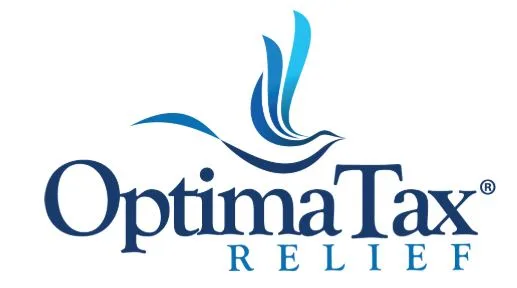Boosting Trust in Edu-Tech: How Reviews and Guarantees Can Make or Break Platforms
While working for an Edu-Tech company, I’ve learned that technology alone doesn’t keep students or their parents engaged. People don’t just buy features; they look for trust, which is why many turn to an online writing service or education-focused platform that offers real help with assignment tasks, complete with user review systems to prove credibility. Edu-Tech used to be a small part of education, but now it’s a major force, often the primary way learners study outside of school.
Edu-Tech used to be a small part of education, but now it’s a big deal. These platforms are no longer just “nice-to-have” bonuses; they are often the major way people study outside of school. They include AI-powered learning tools, online coaching, and course marketplaces. But that transition comes with a lot of responsibility. Students put in not just their money but also their time and, in many cases, their academic confidence. That’s a big deal.
This is when trust comes in. One person will click “Sign Up” and the other will close the page when they see the same platform that sells the same thing for the same price. What is the difference? A lot of the time, it’s all about reviews and promises. Real stories from previous students and clear safety nets like money-back guarantees can either make a platform look trustworthy or kill it before it even gets a chance.
This essay will discuss how reviews and guarantees may either build or break trust in Edu-Tech. The goal is to find out why these items aren’t just extras, from how consumers make decisions to the methods that actually work. They are lifelines for platforms like ours.
What Trust Means in Education Technology
When we talk about trust in digital education, we mean more than just whether someone thinks a platform looks great or has a good app experience. People trust Edu-Tech based on whether they believe we will keep our word and be there when they need us.
As a product manager, I see three things that happen over and over again that have the biggest impact on trust:
- The platform’s name
It’s time for a new user to “gut check.” Have they heard of us before? Did a friend tell you about us? Are we talking about the same things as well-known persons in the field? People will trust you before they even click “create account” if you have a good reputation. Without it, everything else seems like a lot of work. - The quality of the material and the way it is taught
When a student reads a lesson and thinks it was worth their time, their faith in you develops. You can lose confidence if the modules aren’t well thought out, the subject is out of date, or the professors don’t seem enthusiastic. On the other side, kids feel comfortable when they see good teaching that is current and entertaining. - Customer service experiences
A lot of people forget about this one, but it’s quite crucial. There will always be problems with the technology, such missing courses, technical issues, and payment issues, no matter how amazing it is. How we respond will determine whether a dissatisfied user becomes a lost user or a loyal supporter. When the support team showed they cared and acted quickly, I observed customers overlook flaws in the product.
In short, trust in Edu-Tech comes from more than just great technology. It comes from trustworthiness, constant value, and reliable help from people. If even one of these pillars wobbles, the whole edifice seems to be in trouble. And when students trust technology to support their future careers, AI-powered tools can really shine—like this guide on how to use AI to make the best resume in the world.
How Reviews Change Trust
You presumably didn’t start by looking at the feature lists of two identical platforms if you ever had to select between them. You probably read what other people had to say about them. In Edu-Tech, reviews are very important. They are not only a part of the marketing plan; they are often what makes someone click “enroll” or “move on.”
It’s hard to say how essential content made by users is. People want businesses to make promises that are straightforward and easy to understand, but they trust their friends. Reviews are legitimate because they are written by real people, not by marketers. That’s why a few honest evaluations might be more impactful than a lot of money spent on marketing.
There are a few different ways that reviews change how people think:
- Good reviews get things going, but one well-written bad review could have just as much force. It’s strange that a platform may look dodgy if it only has nice reviews. People generally desire a mix because it seems more real.
- Qualitative feedback vs. quantitative ratings: A star rating provides you a quick idea, but the comments that go with it are what actually matter. Most people are happy with the “4.7/5” score. You can see why it matters by reading a paragraph on how a platform helped someone finally pass their statistics class.
Where can I get these reviews? Everywhere. Social media helps people form quick opinions, while specialized review sites like Trustpilot or G2 supply more organized information. Of course, word-of-mouth recommendations, whether in group chats or classroom discussions, are still quite important.
You can’t just assume that reviews will come in slowly from the product’s point of view. The finest plans are those that
- Encouraging others to share their tales, but not forcing them to do so.
- When someone posts an unfavorable review, don’t get defensive. Instead, be open and give them ideas.
- Putting great reviews where new users can see them, like on landing pages or checkout screens.
If you handle them right, reviews can not only show trust, but also develop it.
How to Build Trust with Guarantees
Reviews ask, “Can I trust this platform?” and guarantees ask, “What if it doesn’t work out?” They trust both what other people have done and what they do themselves.
In Edu-Tech, there are a few ways to receive a guarantee. The money-back promise is the most common one and is still one of the best. It makes those who are reluctant to commit feel like the risk is lesser. You could also get completion certificates. They might not give you your money back, but they do indicate that you put in a lot of labor. That piece of paper (or PDF badge) is more significant than the course in some cases.
The nicest thing about guarantees is that they make it easier for people to come in by lowering the emotional and financial obstacles. If a student knows they won’t lose everything if the platform doesn’t function, they are more willing to try it. This is really vital for our new business. We need to quickly build up our confidence so we can compete with established businesses, and guarantees help us do so.
Of course, there are risks involved in using or giving too many guarantees. If it’s hard or full of exceptions to get your money back, a promise to give it back means nothing. It could also be a bad idea to give away credentials that aren’t accepted at school or employment. Only clear and attainable promises make something more credible.
Some of the most popular Edu-Tech platforms have earned their reputations on more than simply what they sell. They also support it. For example, companies have utilized refund statistics to show that they are open: “Last year, less than 2% of students asked for a refund.” That kind of data inspires trust more than any tagline could, as long as it’s true.
In summary, guarantees are not merely ways to sell things; they are promises. And in a field where people are already suspicious about scams and wasting time, these pledges mean something.
The Best Results Come from Combining Reviews and Guarantees
They are all significant on their own, but when you bring them together, that’s when the real magic comes. Reviews show how other people have utilized the platform, and guarantees provide potential buyers piece of mind that they can go ahead and do it. When they work together, they show more trust than when they work alone.
Finding a balance is the most crucial thing for a product manager. If we focus too much on promises and not enough on real reviews, we could seem defensive, like we’re trying too hard to cover our flaws. On the other side, if we only use user ratings and don’t make any promises, new users can still be apprehensive and ask, “But what if it doesn’t work for me?”
Some ways that I’ve seen work well are:
- Putting testimonials and assurances together: Imagine reading a review from a student who got through their mathematics class thanks to the platform, and then seeing a comment that says there is also a 14-day money-back guarantee. The trust level goes up by two: you know it works for other people and you have protection if it doesn’t work for you.
- Being honest about how reviews are collected: People are starting to doubt praise that has been carefully chosen. Saying that reviews are unedited or showing both excellent and poor ones actually makes you more trustworthy.
- Making it easy to understand and get to guarantees: People don’t believe you when you use long legal terms that are hidden in footnotes. They make you look untrustworthy. There should be clear wording and easy steps behind guarantees.
Putting together reviews and guarantees is not just a means to sell stuff; it’s also a way to learn. We’re showing users how to read reviews, what safety nets are in place, and why they can trust the site. That level of honesty makes trust more than simply a feeling.
To Sum Up
You can’t add trust to Edu-Tech later; it’s the bedrock that defines if a platform will succeed or fail. Reviews and guarantees both assist develop that base, but they do so in different ways. Reviews teach potential learners what to expect from real individuals, which is social proof. Guarantees decrease personal risk by giving clear commitments that make people feel safe trying.
The best thing about them is how well they operate together. Reviews talk about things that have worked successfully in the past, while guarantees provide you piece of mind regarding the future. They create a loop of trust that makes consumers more likely to sign up, stay, use the platform, and tell others about it.
The lesson for those of us who build Edu-Tech solutions is simple but hard: we need to make reviews and guarantees a key part of our product strategy from the start, not something we think about afterward. That means making sure that review processes are transparent, offering assurances that matter and are easy to claim, and constantly following through on both.
Every day, platforms need to earn the trust of their users if Edu-Tech is going to keep growing as a trustworthy alternative to or addition to traditional education. There are other ways to do this besides reviews and promises, but if you utilize them effectively, they can make a tremendous difference.





